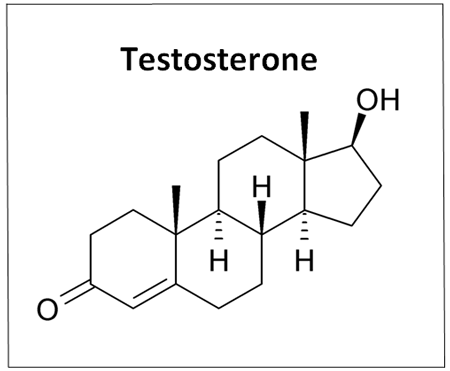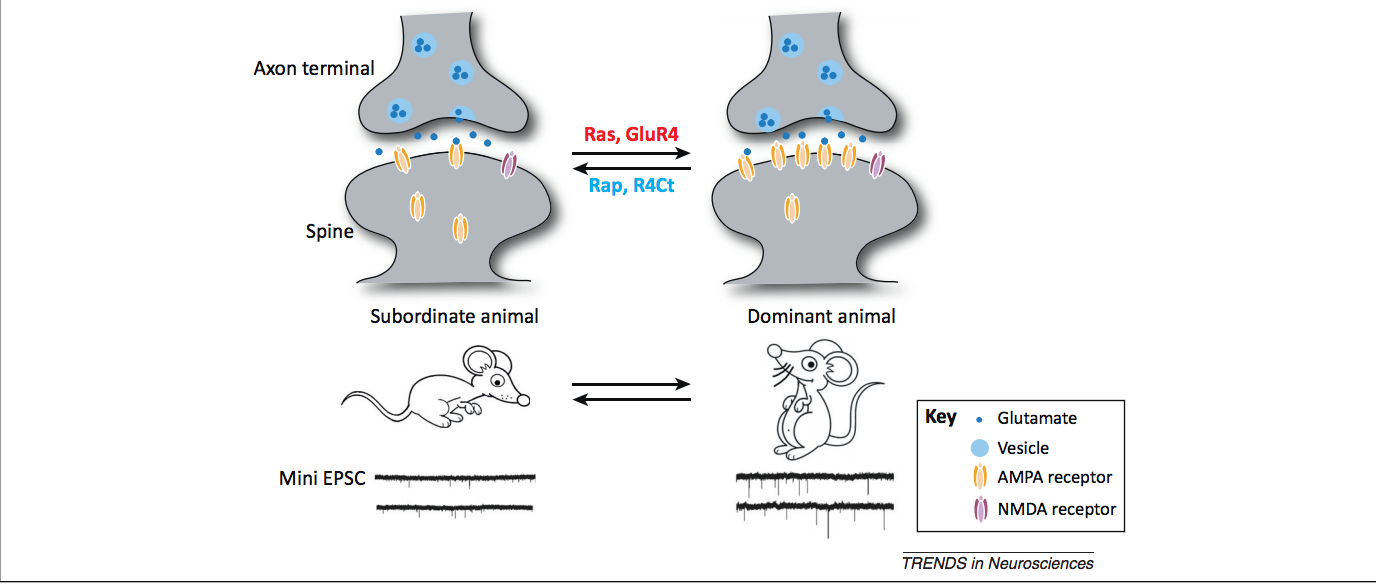Dominance Hierarchies in Male Rattus Norvegicus
James Ryan
Biology 342 Fall 2015
Mechanism
The mechanism of a behavior refers to the physiological, molecular, and genetic factors involved in regulating and inducing its elicitation and emission.
Importance of Steroid Hormones: Testosterone
Increases in circulating and neurobiological expression of testosterone is predicted as part of John Wingfield's "Challenge hypothesis" (Wingfield et al., 1986), and increased secretion of testosterone in response to social conflicts over access to mating has been documented in a wide variety of animals. The importance of testosterone in social aggression doesn't appear to be limited to direct conflicts over mating, however; increased testosterone has been implicated in fostering social dominance-related conflicts in species such as baboons (Sapolsky 1982) and rats (Schuurman 1980).

Necessity of Testosterone Secretion for Dominant Status in Male Rats
The major importance of testosterone in the formation and maintenance of rat dominance hierarchies, particularly through its role in inducing aggression, has been demonstrated through a series of elegant experiments by David Albert. In the first experiment (Albert et al., 1986), castration of dominant males within well-established social hierarchies resulted in a reduction of their aggression towards subordinates, and ultimately, the usurpation of the castrated dominant male by males that were previously subordinate to them. In a follow-up experiment (Albert et al., 1987), his group then found that testosterone implantation in the medial hypothalamus of castrated males that had been previously dominant caused an increase in their social aggression followed by significant gains in their social rank. Combined, these two experiments suggest that peripheral testosterone secretion is both necessary and sufficient to establish dominant status among male rat pairs.
Neural Mechanisms Regulating Social Status in Male Rodents
Outside the realm of endocrinology, evidence exists to support the claim that dominance/subordinance in male rodents is modulated by differences in synaptic connectivity between regions. In particular, research has shown that subordinate rodents show reduced expression of the AMPA receptor subunit GluR4, an important receptor for inducing post-synaptic depolarization and downstream action potentials, in the medial prefrontal cortex (mPFC), a brain region critically involved in the regulation of decision making and social behavior (Wang et al., 2011).

A consequence of this reduction in AMPA receptor expression in the mPFC is a decrease in the strength of synaptic connections between neurons in the mPFC. This conclusion was reached from electrophysiology experiments that determined that reduced AMPA receptor expression was associated with a decrease in the magnitude of neural membrane depolarization in response to AMPA receptor ligand binding, the consequence of which is decreased sensitivity to post-synaptic inputs from other neurons and a reduced probability of firing in response to a stimulus (Wang et al., 2011). Although it has yet to be shown whether there is a causal relationship between social status and synaptic strength in the mPFC (i.e., does experimentally weakening synaptic connections in the mPFC change a dominant rodent into a subordinate one?), the results of this work demonstrate that neural mechanisms are implicated in the physiological effects of social dominance/subordinance.